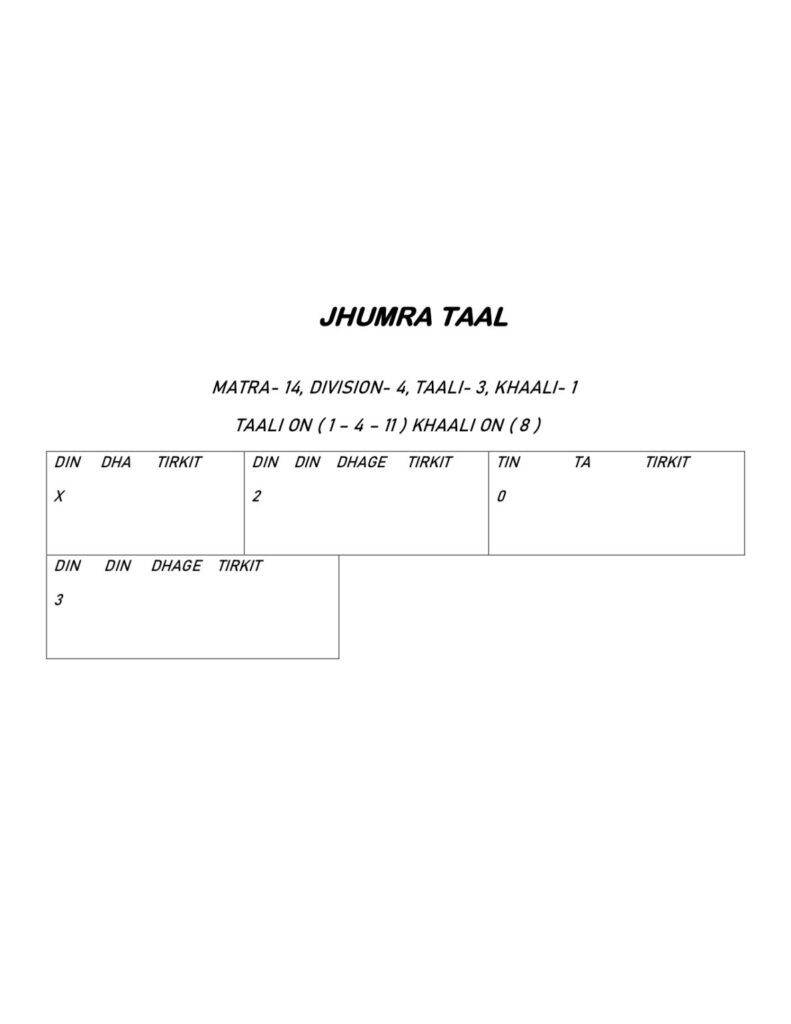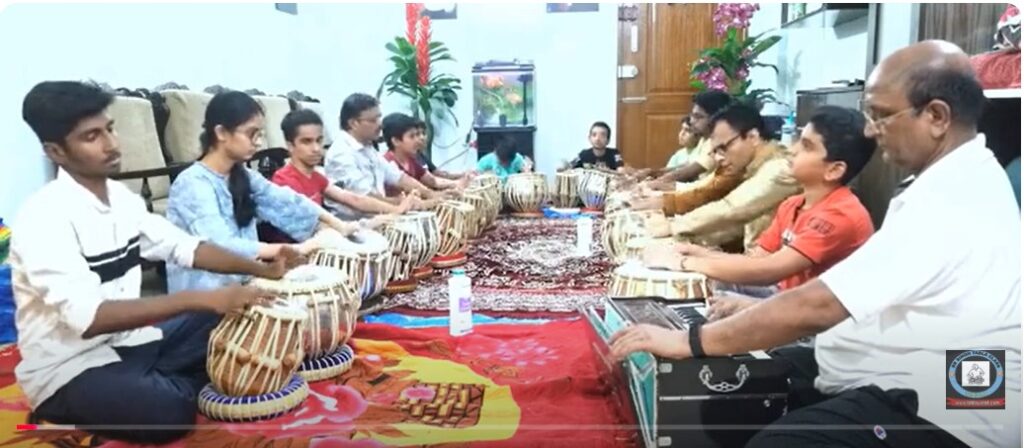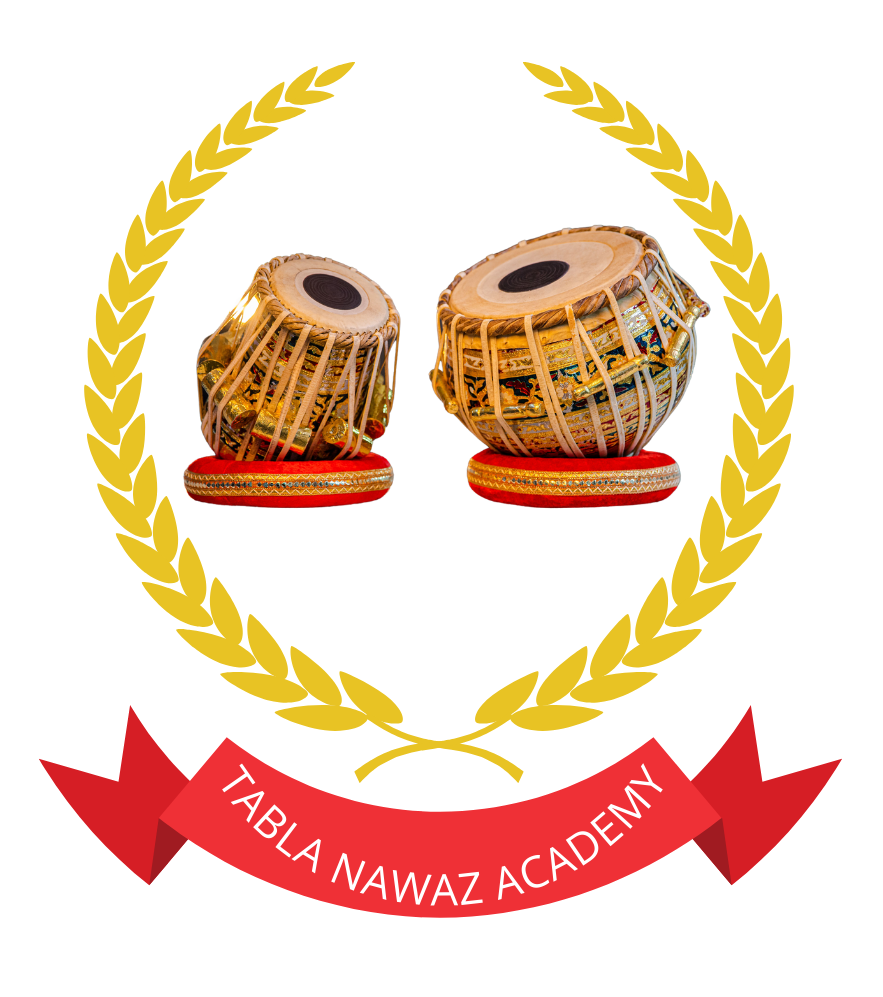Introduction
Jhumra Taal Unveiled: The Majestic 14-Beat Cycle of Grace and PowerIn the grand universe of Hindustani classical music, taal is the invisible thread that ties melody and rhythm together. While common taals like Teentaal and Ektaal often take center stage, Jhumra Taal quietly asserts its presence with regal grace and rhythmic depth. Known for its 14-beat cycle, Jhumra is most often heard in vilambit (slow tempo) khayal performances and is considered one of the most expressive and meditative taals in the tabla repertoire.Whether you’re a seasoned tabla player or a curious music lover, understanding Jhumra Taal is a journey into the heart of Hindustani rhythm.
🧭 Structural Breakdown
Total Beats (Matra): 14
Divisions (Vibhag): 4
Beat Distribution: 3 + 4 + 3 + 4
Claps (Taali): on beats 1, 4, and 11
Wave (Khaali): on beat 8
This distribution gives Jhumra its unique rhythmic identity, marked by subtle shifts and graceful symmetry.
🎼 Theka: Jhumra Taal’s Core Pattern
The theka, or basic pattern played on tabla, serves as the rhythmic backbone of any taal. In Jhumra, the theka is known for its flowing and introspective quality, especially when played in slow tempo.
Jhumra Taal Theka (Vilambit Laya):
nginxCopyEditDha | Dhin Dhin | Dha – | Tin Tin | Ta – | Dhin Na | Dhin Dhin | Dha –
1 2 3 4 5 6 7 8 9 10 11 12 13 14
(Taali) (Taali) (Khaali) (Taali)
This pattern allows for longer melodic phrases and expressive elaboration by the soloist or vocalist, giving the tabla player room to experiment with variations (paltas) and improvisations (tihai).
🎤 Usage in Classical Music
Jhumra is most frequently used in Khayal renditions, especially those involving vilambit bandishes (slow compositions). Vocalists like Ustad Amir Khan, Pandit Bhimsen Joshi, and Kishori Amonkar have employed Jhumra to stunning effect, allowing the audience to savor every phrase of the raga.
It also finds occasional use in sarod, sitar, and sarangi performances, often to showcase the emotional depth of slow-tempo ragas such as Yaman, Darbari Kanada, or Bhairav.
🌟 Why is Jhumra Special?
Jhumra is not a flashy or aggressive taal. Instead, it embodies depth, emotion, and patience. Its expansive cycle gives both the vocalist and the tabla player time to develop their ideas. The tabla player must maintain the balance between supporting the soloist and adding nuanced rhythmic textures without overwhelming the composition.
For tabla students, mastering Jhumra is a rite of passage. Its slow tempo demands precision, control, and emotional expression—a true test of maturity.

Want to hear Jhumra in action? Check out these iconic performances:
🧠 Quick Quiz: Test Your Taal Sense!
Which of these is the correct vibhag structure of Jhumra?
A. 4 + 4 + 4 + 2
B. 3 + 4 + 3 + 4
C. 5 + 5 + 4
D. 7 + 7
📊 Poll: Your Favorite Vilambit Taal?
🗳️ Which slow-tempo taal moves you the most?
- Jhumra
- Tilwada
- Ektaal
- Teentaal (Vilambit)
👉 Vote in the comments or share your experience with Jhumra!
🎯 Conclusion
Jhumra Taal may not be the most commonly played rhythm, but its subtle beauty and majestic flow make it unforgettable. It challenges the tabla player to blend discipline with expression and invites the listener into a world of serene introspection.
So next time you hear a slow unfolding raga, pay attention—you just might be in the graceful embrace of Jhumra.
https://www.youtube.com/@BhagawanSingh

